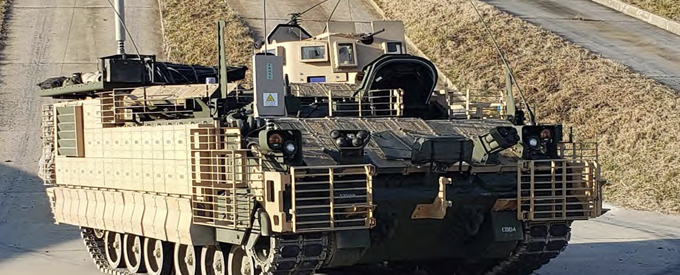2023-10-01
U.S. Army’s AMPVs Catapult into Full-rate Production
BAE Systems has secured a contract worth US$797 million to sustain production of the Armoured Multi-Purpose Vehicle (AMPV) for the U.S. Army. The agreement includes provisions for potential additional options that could increase the total contract value to US$1.6 billion.
This award catapults the AMPV programme into full-rate production, establishing it as the inaugural newly-designed and constructed tracked vehicle within the U.S. Army’s arsenal to attain this production milestone in three decades.
The programme serves as a modernised replacement for the ageing M113 family of vehicles from the Vietnam War era within the U.S. Army’s inventory.
This multi-mission AMPV vehicle family offers vital enhancements in survivability, mobility, and interoperability to bolster the capabilities of the Armoured Brigade Combat Team (ABCT).
The AMPV programme is one of the U.S. Army’s top vehicle modernisation programmes. The Army first awarded BAE Systems the AMPV contract in 2014 and signed a low-rate initial production (LRIP) contract in 2018. The first LRIP vehicle was delivered in August 2020.
Jeremy Tondreault, president of the Platforms & Services sector at BAE Systems, stated: “Entering full-rate production is a momentous milestone in the lifecycle of a production programme for both the U.S. Army and BAE Systems. The AMPV is the next generation replacement for the venerable M113, and we are proud that this critical capability is on its way to the men and women who need our most capable combat vehicles on the front lines.”
The AMPV vehicle family, designed for multiple mission profiles, encompasses:
General Purpose Vehicle
The General Purpose Vehicle (GPV) plays a vital role across the battlefield, serving as a versatile platform for resupply, maintenance, and alternate casualty evacuation (CASEVAC) from the point of injury. It serves as the first sergeants’ vehicle for the Combined Arms Battalion.
The GPV is designed to accommodate a driver, commander, and four soldiers, and it boasts the flexibility to be swiftly reconfigured for CASEVAC missions, ensuring the safe transport of a supine litter casualty without affecting or displacing the vehicle’s crew or equipment.
Mortar Carrier
The Mortar Carrier (MC) provides immediate, responsive, heavy mortar fire support to the ABCT in the conduct of fast-paced offensive operations by utilising the M121 Mortar System and the M95 Mortar Fire Control System. The MC provides logistical resupply, casualty evacuation and treatment, command post operations, and heavy mortar fire support for the ABCT.
Medical Evacuation Vehicle
The Medical Evacuation variant of the AMPV is outfitted with cutting-edge technology, heightened mobility, enhanced force protection, and onboard power. This configuration offers soldiers the essential versatility required to support a diverse array of missions.
The vehicle provides immediate treatment or evacuation at the point of injury to either ambulatory or litter casualties. Ambulatory patients are able to walk into the vehicle on their own and sit upright for treatment, while carrying on the fight when necessary.
The Medical Evacuation vehicle’s proven capabilities include a medical treatment area, reconfigurable ambulatory capacity of six and an evacuation medical equipment set. The vehicle can accommodate up to six ambulatory patients or four litter patients.
Medical Treatment Vehicle
This first-of-its-kind “operating room on tracks,” the Medical Treatment Vehicle (MTV) provides critical, life-sustaining care to soldiers with life-threatening injuries.
Designed to seamlessly integrate with new survivability technology, it collaborates closely with the Medical Evacuation variant to receive and evacuate casualties while delivering vital medical care.
The interior boasts a spacious layout for medics to effectively treat patients and increased load capacity, powered by electricity, for carrying essential medical equipment.
Armed with advanced medical equipment to help soldiers injured in battle, the vehicle is capable of carrying equipment to conduct damage control resuscitation while awaiting evacuation from forward operations.
Equipment such as the erectable treatment shelter, medication, vital signs monitor, defibrillator, and refrigerator for storing blood, convert the Medical Treatment into a medical station on the front lines, known as a Forward Aid Station.
Mission Command Vehicle
This specialised vehicle serves as a digital mission command centre, equipping commanders with essential tools to enhance command, control, and communications capabilities on the battlefield.
The vehicle is a critical part of the U.S. Army’s modernisation efforts. It enhances digital mission command capabilities and provides increased command and control capacity while remaining adaptable to future force protection needs.
Future Vision
The AMPV is designed to meet future technology needs with enhanced size, weight, and power provisions for network integration and mission payloads. It offers support for current missions and is adaptable for future technologies. Extensive Army testing ensures its combat readiness.


No Comments